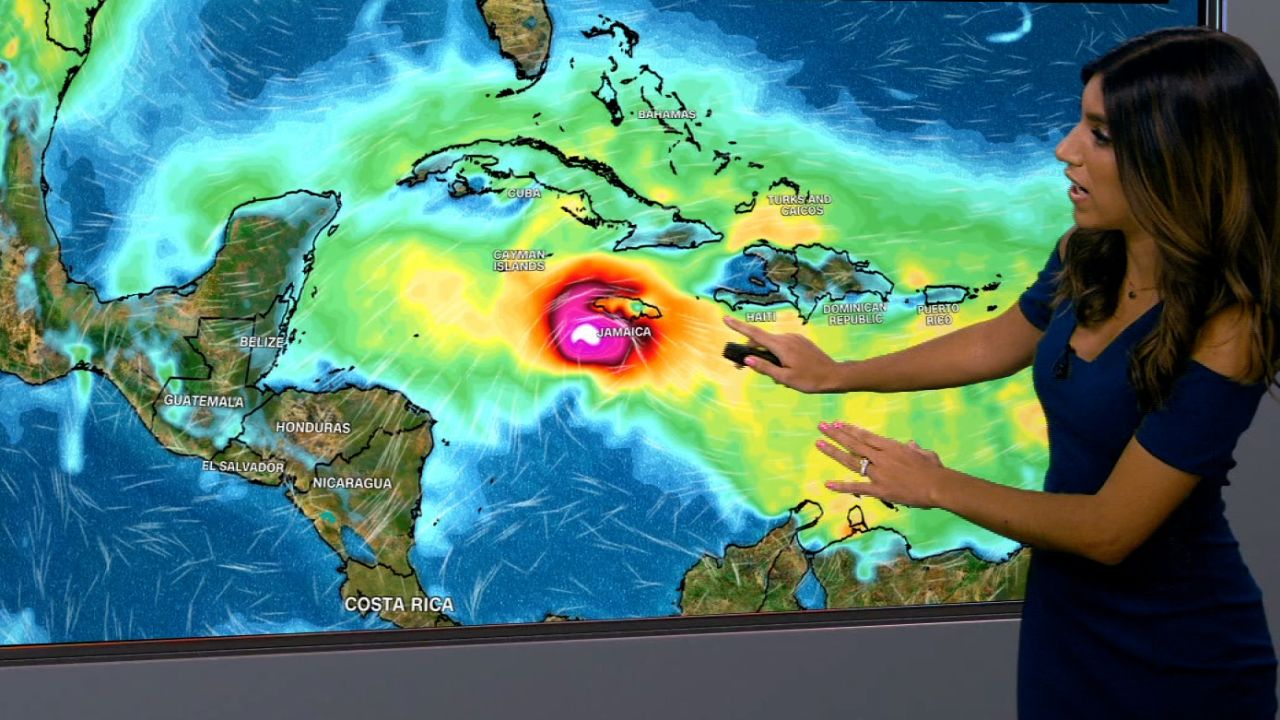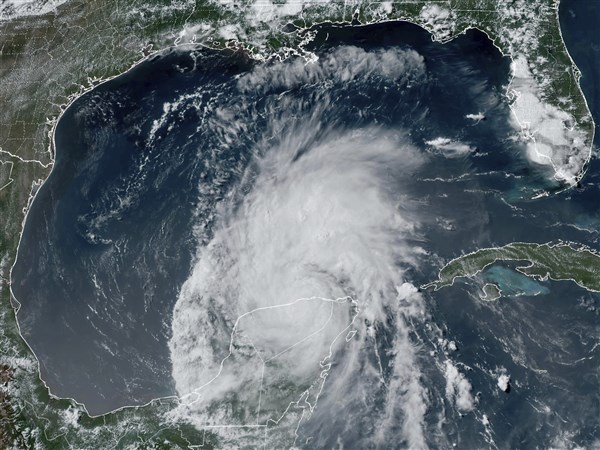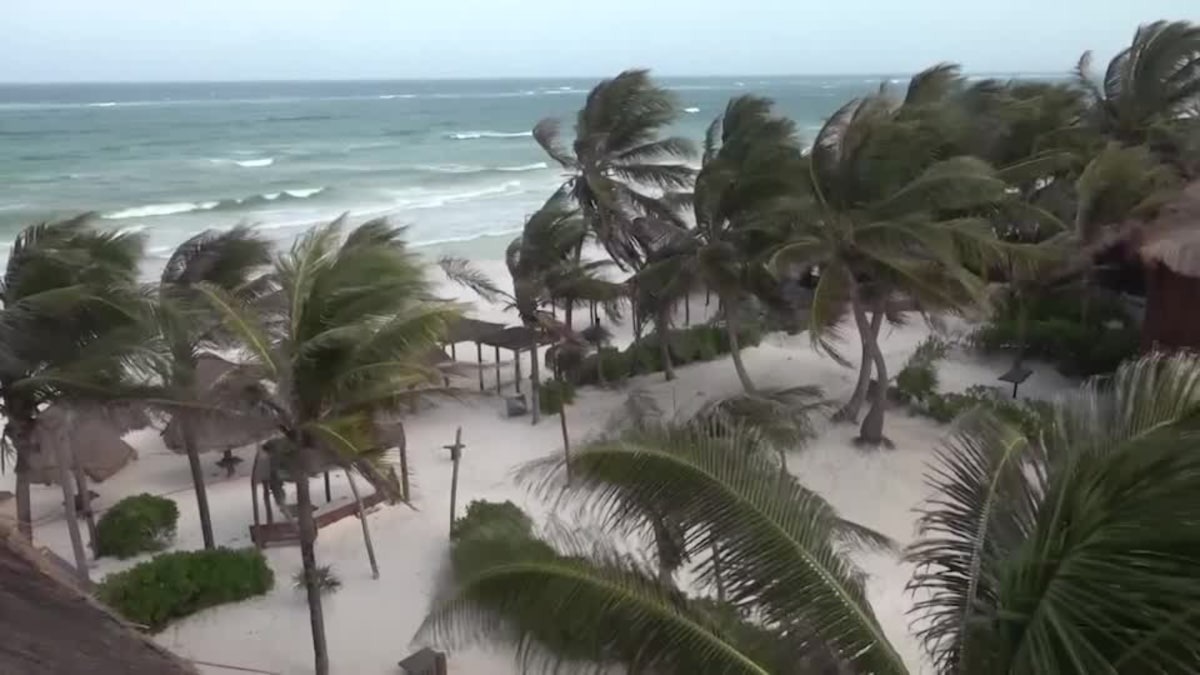As of April 2025, Hurricane Beryl has rapidly developed into a powerful Category 4 hurricane, prompting urgent warnings across the Gulf Coast and Southeastern United States. According to the latest updates from the National Hurricane Center (NHC) and the National Oceanic and Atmospheric Administration (NOAA), Beryl is producing sustained winds exceeding 130 miles per hour and may continue strengthening over the next 24 to 48 hours. Forecast models suggest a potential escalation to Category 5 status, which would mark it as one of the most severe hurricanes of the 2025 Atlantic season.

Current Storm Path and Forecast
Meteorologists report that Hurricane Beryl is moving northwest through the Gulf of Mexico, with landfall projected within days. Although the exact point of impact is still being monitored, areas across Louisiana, Mississippi, Alabama, Florida, and the eastern coast of Texas are under heightened alert. The storm’s trajectory is being updated frequently by NOAA and the NHC, and residents are strongly advised to consult official sources for the latest tracking information.
Category 4 Storm: What That Means
The Saffir-Simpson Hurricane Wind Scale categorizes hurricanes from Category 1 to 5 based on their sustained wind speeds and potential for damage. A Category 4 hurricane like Beryl includes:
-
Sustained wind speeds of 130–156 mph (209–251 km/h)
-
Catastrophic damage potential to homes, buildings, and infrastructure
-
High risk of long-term power outages and water shortages
-
Risk of structural failure in older buildings and non-reinforced homes
-
Widespread uprooting of trees and blocking of roadways
Given these conditions, the NHC classifies Category 4 storms as extremely dangerous, with potentially devastating consequences for both coastal and inland communities.

Evacuation Orders and Emergency Declarations
Local and state authorities in several coastal regions have issued mandatory evacuation orders. Emergency declarations have been signed in multiple counties and states in anticipation of the storm’s impact. Residents living in flood-prone areas, barrier islands, and zones previously impacted by hurricanes are among those required to evacuate.
In Louisiana and Texas, emergency management agencies have opened evacuation shelters and are assisting those without personal transportation. Public advisories emphasize the importance of following official guidance and avoiding delays, especially as the hurricane continues to strengthen.
Potential Hazards from Hurricane Beryl
According to the NHC and FEMA, Hurricane Beryl poses multiple threats:
1. Storm Surge
A storm surge occurs when hurricane winds push seawater onto the shore, often resulting in coastal flooding. Current projections indicate storm surges could reach 10–15 feet in some low-lying areas. These surges can extend several miles inland and pose serious risks to life and property.
2. Inland Flooding
Beryl is expected to bring torrential rainfall to a wide region. Flash flooding is likely, especially in urban areas, where drainage systems may become overwhelmed. River flooding may also occur due to prolonged rain accumulation.
3. Destructive Winds
Winds exceeding 130 mph are capable of tearing off roofs, destroying mobile homes, and uprooting large trees. Flying debris during high wind events can cause injuries or fatalities.
4. Tornado Risk
Tropical systems like Beryl can also spawn tornadoes, particularly in the outer rainbands of the storm. These tornadoes can develop quickly and cause localized damage away from the storm’s center.
Preparedness Measures for Residents
FEMA and state emergency agencies are urging residents to take the following steps immediately:
-
Evacuate if Ordered: Follow evacuation orders without delay. Waiting can increase risk as roads become congested or impassable.
-
Prepare a Disaster Supply Kit: This should include at least three days’ worth of non-perishable food, water (one gallon per person per day), medications, flashlights, batteries, cash, important documents, and hygiene supplies.
-
Secure Property: Board up windows, anchor outdoor furniture, and remove debris that could become airborne in strong winds.
-
Charge Devices and Fuel Vehicles: Ensure mobile phones and backup power banks are fully charged. Fill gas tanks in advance, as fuel shortages often occur before major storms.
-
Monitor Reliable Sources: Track the storm using trusted sources like the National Hurricane Center, local emergency management offices, or the FEMA app.
Government and Community Response
In preparation for Hurricane Beryl, the Federal Emergency Management Agency (FEMA) has deployed response teams to staging areas throughout the Gulf region. The U.S. Coast Guard, National Guard units, and local first responders are coordinating efforts to assist in evacuations and prepare for post-storm recovery operations.
Hospitals and emergency shelters are preparing for increased capacity. Public schools and government offices in high-risk areas have announced closures, and utility companies are pre-positioning crews to address widespread power outages expected after landfall.
Historical Context and Climate Factors
The Atlantic hurricane season typically spans from June to November, with peak activity occurring between August and October. However, early-season storms such as Beryl are becoming more frequent, which climate researchers attribute in part to rising ocean temperatures and shifting weather patterns.
According to NOAA, warmer sea surface temperatures provide more fuel for hurricanes, increasing the likelihood of rapid intensification, as seen in Beryl’s development. The storm’s unusually early strength has prompted renewed calls for coastal cities to update infrastructure and emergency plans to adapt to evolving climate risks.
Long-Term Safety and Recovery Considerations
After landfall, the priority will shift to search and rescue, restoring power and communication, and addressing water and food needs for affected populations. Past hurricanes have shown that recovery can take weeks or even months, particularly in areas that suffer widespread damage.
Residents are advised to have a post-storm plan in place. This includes knowing where to report damage, how to apply for FEMA disaster assistance, and how to stay safe amid downed power lines or floodwaters.
Insurance policyholders are encouraged to review their coverage before the storm makes landfall, document belongings, and understand how to file claims in the event of property damage.
Conclusion
Hurricane Beryl is a rapidly intensifying storm with the potential to cause widespread damage along the Gulf Coast and Southeastern United States. With sustained winds exceeding 130 mph and further strengthening anticipated, the time to prepare is now. Local authorities, federal agencies, and emergency responders are working around the clock to mitigate impacts and support evacuation efforts.
Residents in the storm’s projected path must act swiftly and responsibly by heeding official warnings, preparing emergency kits, and ensuring their homes and families are ready for severe weather. Staying informed, calm, and proactive can make all the difference in staying safe during one of nature’s most powerful events.
